Introduction: Why Is “Wireless TV on Wheels” the Game-Changer You’ve Been Waiting For?
Imagine the freedom to move a high-quality display wherever you need it, with no cables holding you back and no fixed installation required. This dream is becoming reality with the advent of wireless TVs on wheels, a solution designed to make viewing adaptable, efficient, and versatile. But with this newfound flexibility come questions: How does a wireless TV on wheels perform across different scenarios? Is it reliable, and what makes it worth the investment?
Enter the wireless TV on wheels—a portable, fully mobile screen solution that offers the freedom to move it wherever it’s needed. These screens eliminate cable clutter, are easily shareable among users, and provide high-quality visuals without needing dedicated installation. But beyond convenience, how well does a wireless TV on wheels actually perform? Is it stable enough for business presentations, engaging for students, or durable enough for healthcare needs?
In this guide, we’ll answer these questions and more, taking a deep dive into the key features, benefits, and real-world applications of wireless TVs on wheels. From how they can transform meetings to improving patient care, we’ll examine how this technology adapts to various needs. If you’re considering one for personal use or a professional setting, read on to see how a wireless TV on wheels can fit seamlessly into your life.

Chapter 1: Key Features and Technology Behind Wireless TV on Wheels
1.1 Unpacking the Wireless Technology
Wireless TVs on wheels come equipped with Wi-Fi, Bluetooth, and sometimes casting capabilities that allow them to sync seamlessly with various devices, such as smartphones, laptops, and tablets. Unlike traditional TVs, these units use advanced mirroring and smart streaming protocols to provide high-quality video and audio without the clutter of cables. This capability enables users to stream content, display presentations, or share screens from any corner of a room or building.
1.2 Rolling Mobility – The Freedom to Relocate
The mounted wheels on these TVs aren’t just for show. Heavy-duty casters with lock mechanisms ensure that the screen can be rolled to any spot with ease and stability. The rolling feature allows for versatility in use and easy adjustments for an optimal viewing experience, whether in a classroom, a meeting room, or even an open event space.
Chapter 2: Enhancing User Experience in Various Settings
2.1 Business Meetings and Collaborative Workspaces
For businesses, wireless TVs on wheels are a boon to collaborative work. Unlike fixed conference room setups, a mobile, wireless screen can be brought into any office or meeting space. Remote workers and in-office teams can connect to the display via video conferencing apps without needing to install additional hardware. With screen-sharing and wireless connectivity, everyone can present and interact with content directly from their devices, simplifying presentations and boosting productivity.
2.2 Education and Interactive Learning
Classrooms, especially those emphasizing interactive and group learning, can benefit tremendously from this device. Teachers can move the TV around to different groups for close-up viewing, engage students with interactive lessons, and quickly adapt the setup based on the class’s needs. With educational software pre-installed on the TV or accessible wirelessly, teachers gain flexibility and time to focus more on content than on setup logistics.
2.3 Healthcare and Patient Care
Healthcare is another sector where the utility of a wireless TV on wheels shines. Portable screens in patient rooms can be used to deliver custom content, offer entertainment, and even provide remote consultations. Medical staff can use them to communicate treatment plans visually, showing X-rays, videos, or diagrams to patients, which can improve understanding and reduce anxiety.
2.4 Home Entertainment and Gaming
For consumers, a wireless TV on wheels can transform home entertainment. Imagine moving the screen from your living room to your bedroom or even the patio without lifting a finger. It’s also a fantastic addition for gamers, providing easy adjustments for an immersive gaming experience. Plus, smart TVs on wheels can work with all the major streaming services, allowing instant access to shows, movies, and games.
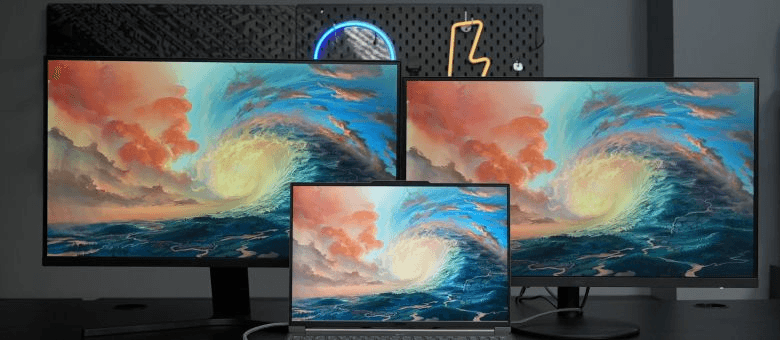
Chapter 3: Real-World Case Studies and Testimonials
3.1 Educational Institution Embraces Flexibility
In a recent study conducted with an educational institution, classrooms outfitted with wireless TVs on wheels saw an increase in student engagement by 30%. Teachers reported that moving the screen to students rather than rearranging the entire class was a time-saver and improved lesson flow.
3.2 A Hospital Implements Wireless Screens for Patient Satisfaction
A hospital introduced wireless TVs on wheels in its wards, and patient satisfaction scores increased by 25%. Patients could watch content and attend virtual check-ins with family members, creating a more comforting environment. Hospital staff also found these screens helpful for showing patients their medical charts and radiology images during consultations.
Chapter 4: What to Look for When Buying a Wireless TV on Wheels
4.1 Screen Resolution and Size
Choose a screen size that suits your space. Higher resolution, especially 4K, is ideal for detailed images in professional settings. A mid-range size (between 40 to 55 inches) is typically the most versatile.
4.2 Battery Life and Power Options
Some wireless TVs are battery-operated, making them truly portable. Ensure the battery life aligns with your intended usage. If mobility isn’t needed, models that rely on plug-in power might be more budget-friendly.
4.3 Connectivity Options and Smart Features
Look for multi-device compatibility and support for major streaming services and presentation software. A good wireless TV on wheels should support both Miracast and AirPlay to ensure cross-device functionality.
4.4 Durability and Ease of Use
Heavy-duty wheels and a durable frame ensure the product’s longevity. Additionally, models with user-friendly interfaces and remote control options are easier to navigate, especially for non-technical users.
4.5 Price and Warranty
Prices vary significantly, so consider what you’re willing to invest based on your needs. Many brands offer warranties and after-sales support, which can be essential in a business or educational setting.
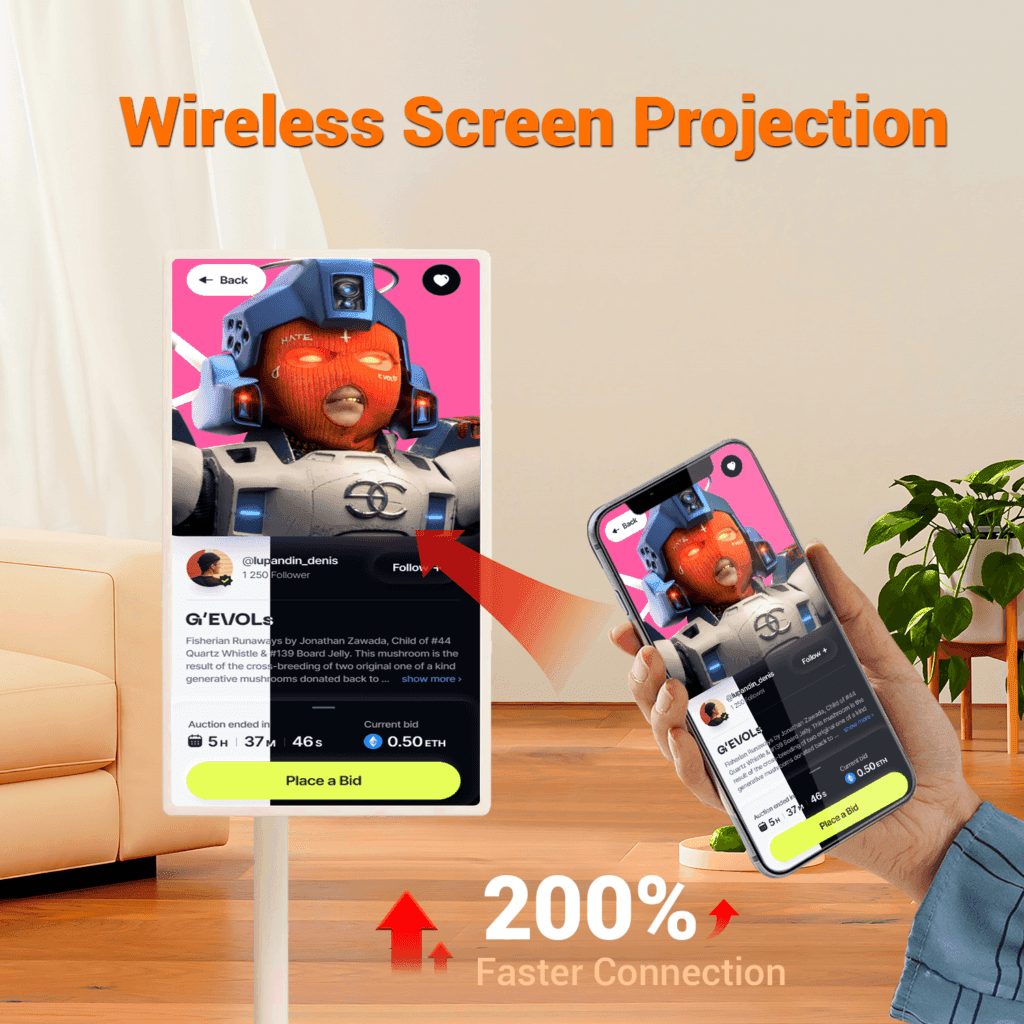
Chapter 5: Practical Tips for Maximizing the Use of Your Wireless TV on Wheels
5.1 Ensuring Optimal Wi-Fi Connectivity
Set up in an area with strong Wi-Fi or invest in a Wi-Fi extender for uninterrupted streaming. If needed, some models allow for an Ethernet adapter connection, which can help when using the screen for high-stakes events like business presentations.
5.2 Regular Maintenance and Software Updates
Keeping the software updated ensures the TV functions smoothly and stays compatible with newer devices. Clean the wheels regularly to maintain easy mobility, and check any security features to ensure data protection in shared spaces.
Conclusion: Bringing the Freedom of Movement to Every Viewing Experience
The wireless TV on wheels offers flexibility, functionality, and a unique approach to screen usage in today’s mobile-driven world. Whether for business presentations, enhancing patient care, dynamic classrooms, or flexible home setups, these screens are adaptable to various scenarios, delivering convenience and efficiency to the user. By understanding their features and making an informed purchase, you can unlock the full potential of a wireless TV on wheels, transforming the way you work, teach, heal, or entertain.
Related product recommendation
-
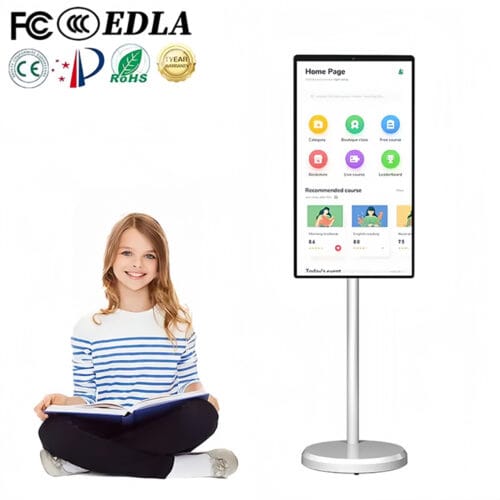 24 inch Stand By Me TV Movable Touch Television
24 inch Stand By Me TV Movable Touch Television -
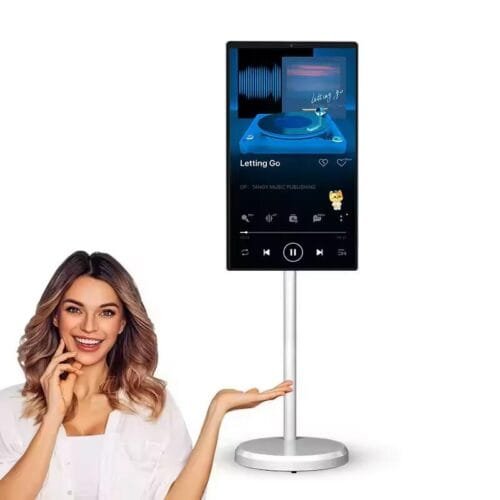 27-Inch Portable Tv Monitor On Wheels Touch Screen 1080p 64GB Storage Smart Screen,Portable Monitor Rotating Display With Mobile Base,With Built-in Battery ,Smart Monitor with Type-C Port
27-Inch Portable Tv Monitor On Wheels Touch Screen 1080p 64GB Storage Smart Screen,Portable Monitor Rotating Display With Mobile Base,With Built-in Battery ,Smart Monitor with Type-C Port -
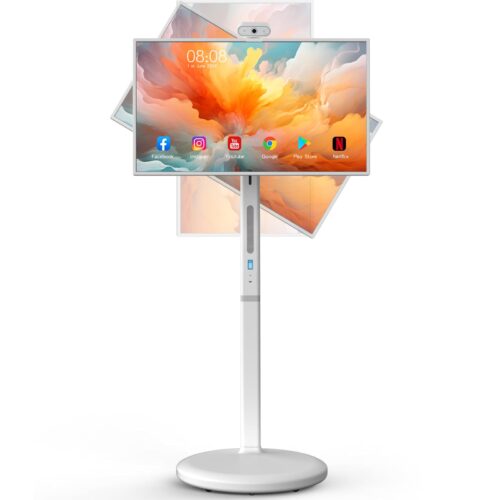 Portable Smart TV 32″ 1080P Touch Screen Monitor on Wheels, Android OS 13 Built-in Battery, Detachable Camera and Stand, Full Swivel Rotation Rolling Tablet for Kitchen, Bedroom, Outdoors
Portable Smart TV 32″ 1080P Touch Screen Monitor on Wheels, Android OS 13 Built-in Battery, Detachable Camera and Stand, Full Swivel Rotation Rolling Tablet for Kitchen, Bedroom, Outdoors